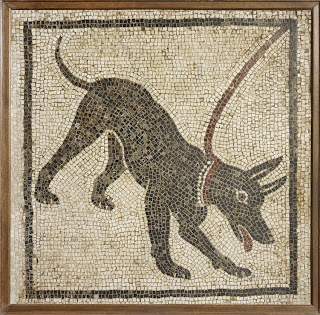The trouble with being an archaeologist (well ONE of the troubles, for there are, of course, a great many) is that when listening to / reading / examining the news one often gets caught up in those stories that are explicitly archaeological, relating to artefacts / monuments and the distant past (treasure, heritage policy, 'major' discoveries etc.), whilst missing the 'big stories'; those which ultimately have a large impact, not just upon the profession, but also upon the way in which humanity is leaving its mark upon the cosmos.
Let me explain.
Voyager 1, the probe fired from planet Earth on September 5th 1977 (confusingly, for the numerically-challenged such as myself, Voyager 2 had been launched two weeks earlier) in order to observe Jupiter and Saturn, has, it was announced by NASA in March, now officially moved away from the gravitational pull of our Sun and as is, as we speak, drifting off into the unknown.
I missed this particular story at the time, partly because it was not ostensibly archaeological, but mostly because I was bogged down marking several thousand assignments (and very interesting they were too). Looking back, the news reports concerning the departure of NASA’s probe were all very dramatic, the reporters concerned being animated and extremely excited (certainly more so than when they had been reporting on the discovery of horse meat in lasagne).
The significance of this event is, from an archaeological perspective, of course that human material culture has now passed beyond the limits of our own, rather parochial, system of planets, moons and other pieces of space rock. Voyager 1 has left the solar system and humanity's archaeological 'footprint' now extends beyond the reach of Sol.
I remember as a child (in 1977), being particularly gripped by the story of Voyager 1 and 2 as they set off on the start of their journey, not because of what they were intended to achieve in their mission to the planets, but because of what had been fixed to their outer casing, just in case an alien intelligence should ever recover them and wonder about their origins.
Bolted to the sides of both Voyager 1 and 2 was a gold plaque, designed by Carl Sagan and other luminaries, representing a 'greeting card' from planet Earth.
Of course this was, in itself, nothing new as Pioneer 10 and 11, launched in 1972 and 73, had already carried a similar greeting, this time etched into gold-anodised aluminium plates. These plaques were intended to inform any intelligent extra-terrestrial life form who should encounter them, where precisely Pioneers 10 and 11 had been launched and by whom (although, at the time, most of the debate seemed to revolve around the fact that the two human figures on the plaques were (shock, horror) naked, prompting some cultural commentators to suggest that humanity was blasting pornography into deep space).
Information stored on the Voyager probes was slightly more advanced comprising sounds and images intended to portray the diversity of life and culture on Earth, all of which were encoded on a phonograph record made of gold-plated copper.
A committee, again chaired by Carl Sagan, assembled some 115 images and a host of 'natural sounds' together with music from different cultures and eras and spoken greetings in 55 languages. Each record was then encased in a protective aluminium jacket, together with a cartridge and a needle. Instructions, in symbolic form, explained the origin of the spacecraft and how, precisely, to play the record.
So far so good, although, with the benefit of hindsight, not to say the relentless march of technology, I do wonder if, as I (an inhabitant of 21st century Earth) cannot adequately locate the equipment necessary to play any of the 562 vinyl long playing records that currently clutter my own hallway, whether an alien technology (advanced or not) will manage to access any of the information held on the discs (or will they, as I suspect, either eat them, destroy them in a fit of pique or use them in a game of interstellar Frisbee).
Two weeks ago, in a lecture entitled "Mobile Artefacts in the Solar System and Beyond", at the annual meeting of the Society for American Archaeology (SAA) in Honolulu, Hawaii, Peter Capelotti (of Penn State University), noted that NASA probes such as Pioneer 10, Pioneer 11, Voyager 1 and Voyager 2 will "eventually enter interstellar space and become the archaeological representatives of Homo sapiens to the rest of the galaxy."
Quite what the rest of the galaxy thinks of such archaeological representatives is anyone's guess.....

















